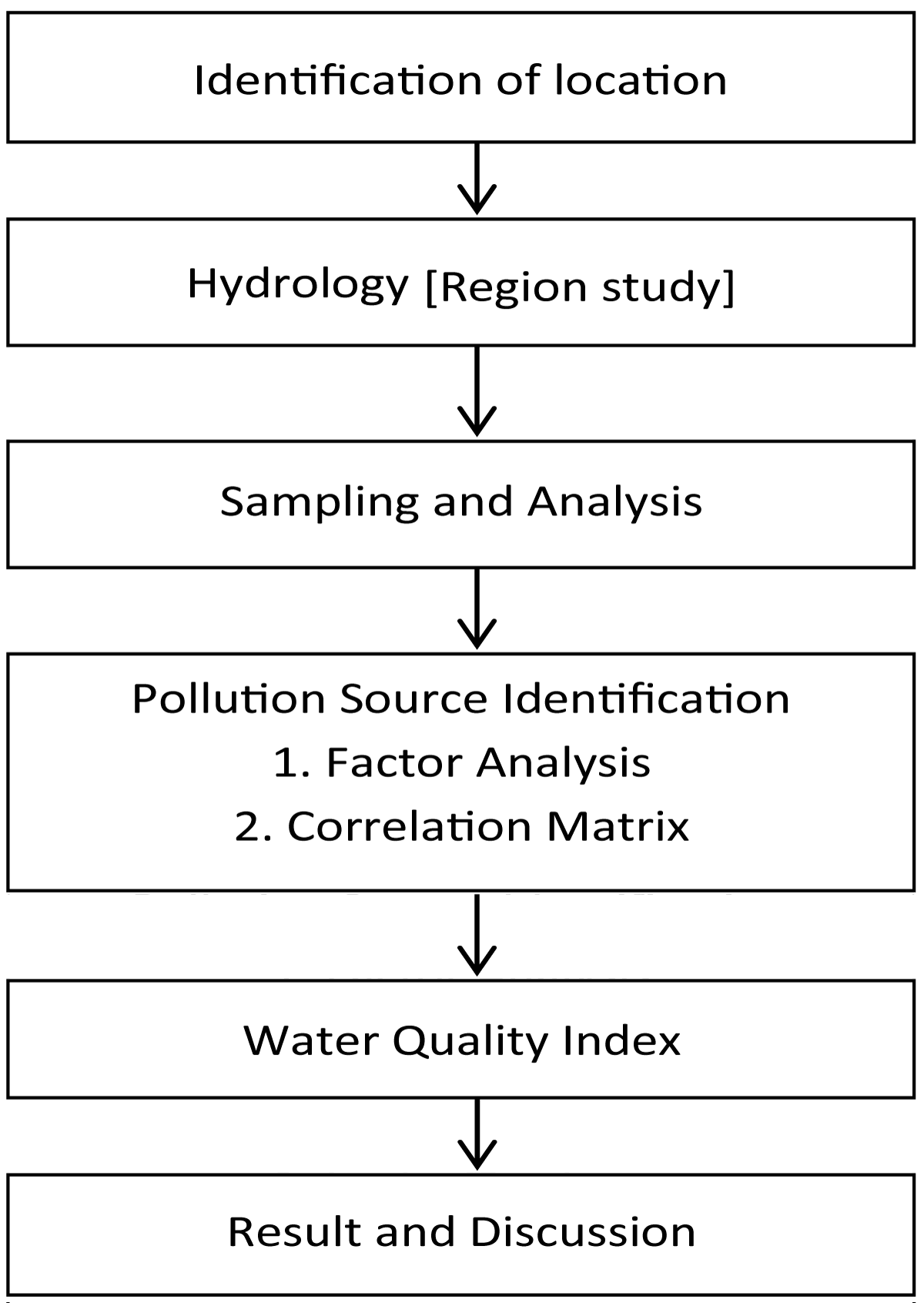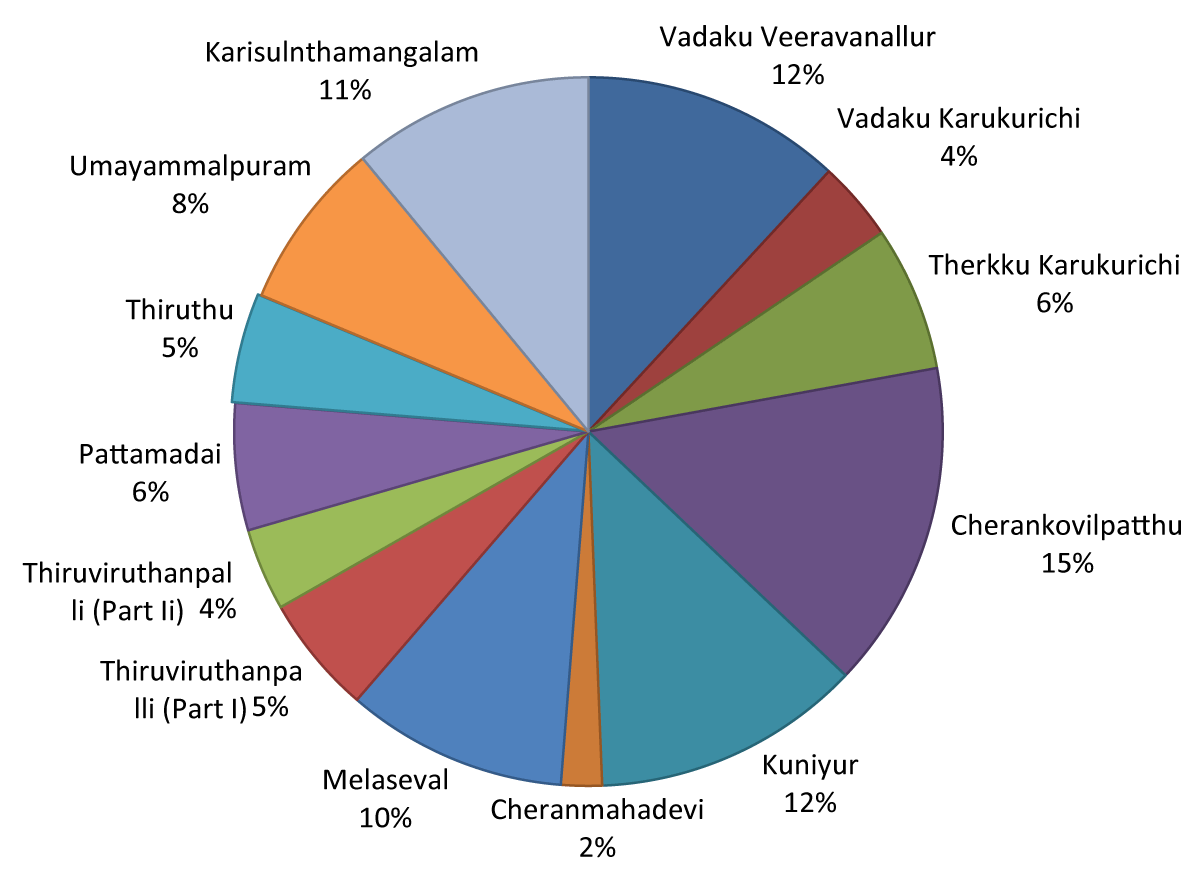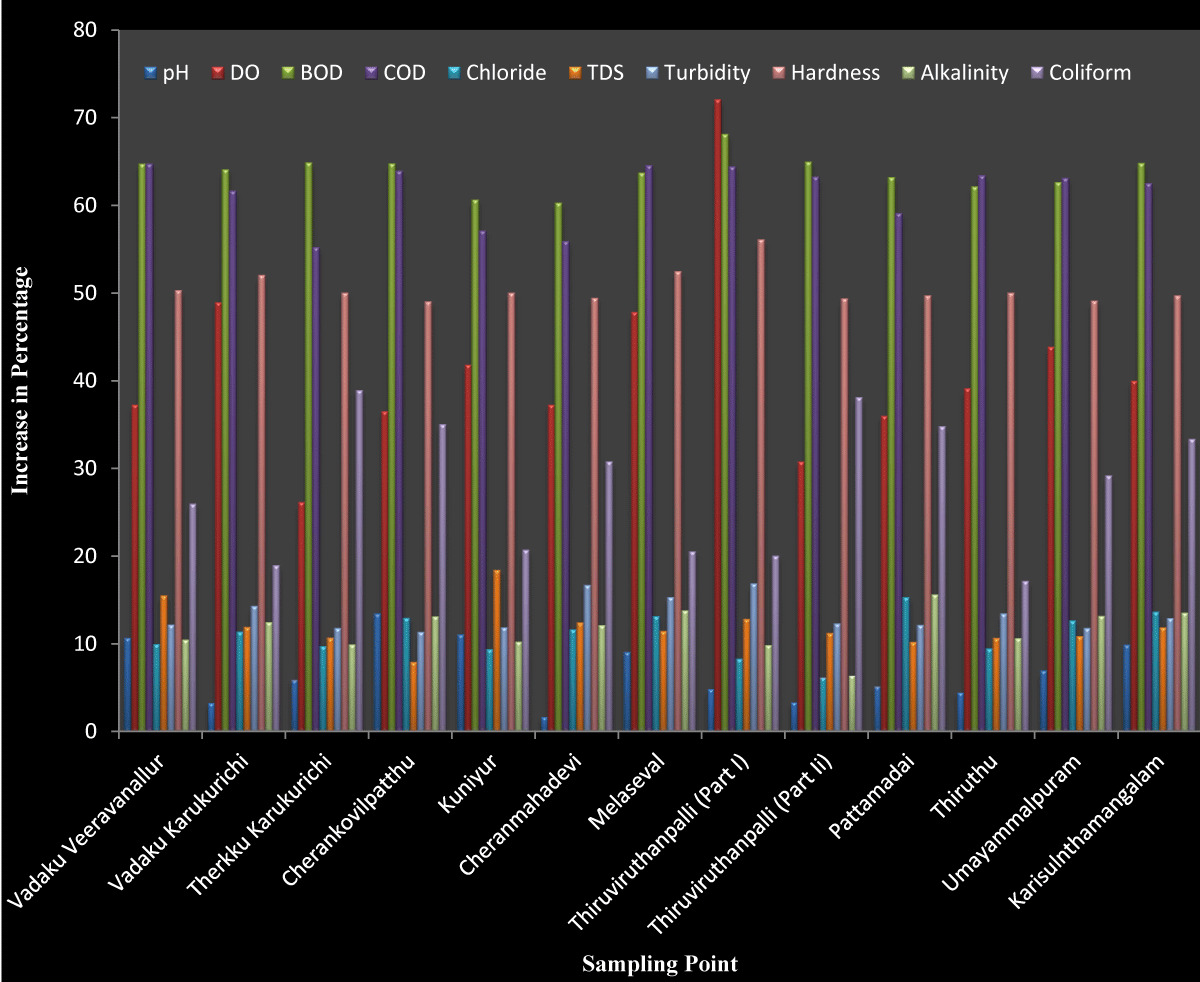More Information
Submitted: May 29, 2021 | Approved: February 13, 2023 | Published: February 14, 2023
How to cite this article: Gopikumar S, Sundararajan S, Allwyn Kingsly Gladston J, Antony Vasantha Kumar C, Hari Babu K, et al. Impact of dyes used in the mat on groundwater in and around Pattamadai, Tirunelveli district, Tamilnadu. Ann Civil Environ Eng. 2023; 7: 001-003.
DOI: 10.29328/journal.acee.1001047
Copyright License: © 2023 Gopikumar S, et al. This is an open access article distributed under the Creative Commons Attribution License, which permits unrestricted use, distribution, and reproduction in any medium, provided the original work is properly cited.
Keywords: Groundwater; Quality parameters; Public health; Pollution
Impact of dyes used in the mat on groundwater in and around Pattamadai, Tirunelveli district, Tamilnadu
Gopikumar S1*, Sundararajan S2, Allwyn Kingsly Gladston J2, Antony Vasantha Kumar C2, Hari Babu K2 and Jeyakumar K2
1Department of Civil Engineering, SCAD College of Engineering & Technology, Tirunelveli, India
2Department of Mechanical Engineering, SCAD College of Engineering & Technology, Tirunelveli, India
*Address for Correspondence: Gopikumar S, Department of Civil Engineering, SCAD College of Engineering & Technology, Tirunelveli, India, Email: [email protected]
The main focus of this study concentrates on evaluating the quality of groundwater in and around the zone of pattamadai where the production of the mat in this region is a landmark industry, which is using dyes in a larger volume. The primary work starts with the collection of water samples from 13 boreholes and 13 hand-dug wells in different time intervals in the month of March 2021, which is a dry season. As per standards the water quality parameters have been evaluated and observed to be within the range. All the physico-chemical parameters for the samples have been studied for boreholes and hand-dug wells as all the values are observed to be within the range and are highlighted in the results.
Pattamadai the name highlights the manufacturing of mat, which is located in the Tirunelveli region with a population of just 14000 people gabbai Muslims. The history of this small town is familiar for weaving mats since the nineteenth century. Due to industrialization, the availability of dye is cost-effective and it is one of the major parameters added in the manufacturing of mat. The raw material for the production is available within pattamadai which is a type of sedge named korai from this the traditional name has originated as korai mats and has been widely recognization by Indian craft producers and cultural heritage departments. Nowadays many enterprises around Tamilnadu are producing mats and the addition of dye during manufacturing causes environmental pollution [1,2]. This research study focuses on the identification of the quality of groundwater near the manufacturing site, which has a direct impact on the wide usage of coloring dyes. Dyes are naturally coloring substances that will chemically bond to the substrate and normally they are soluble. The addition of pigments enhances the fastness of dyes on the fiber and is insoluble. Vast ranges of dyes introduced in the manufacturing are cranberry, dark green, golden brown, storm gray, charcoal, slate, royal blue, billy blue, navy, black, walnut and red. All the above-mentioned dyes are organic compound that contains carbon; whereas pigments are inorganic that gives brighter colors [3-6].
The pattern of work to be progressed is categorized in the flowchart (Figure 1).
Figure 1: Pictorial representation of the methodology.
The samples are collected as per standard procedures in and around pattamadai town and the collected samples are preserved at 27 °C [7-10] (Figures 2-4) (Table 1).
Figure 2: Pictorial representations of collected samples.
Figure 3: Graphical representations of collected samples.
Figure 4: Graphical representations of collected samples.
| Table 1: Physico Chemical parameters from the location. | |||||||||||
| S.No. | Sampling points | pH increased % | DO increased % | BOD increased % | COD increased % | Cl- Chloride increased % | TDS increased % | Turbidity increased % | Hardness increased % | Alkalinity increased % | Fecal Coliform increased in % |
| 1 | Vadaku Veeravanallur | 11 | 37.25 | 64.73 | 65 | 9.93 | 15.47 | 12.16 | 50.29 | 10.43 | 25.93 |
| 2 | Vadaku Karukurichi | 6.3 | 48.94 | 64.08 | 62 | 11.35 | 11.87 | 14.29 | 52.02 | 12.43 | 18.92 |
| 3 | Therkku Karukurichi | 5.9 | 26.15 | 64.85 | 55 | 9.7 | 10.67 | 11.76 | 50 | 9.89 | 38.89 |
| 4 | Cherankovilpatthu | 13 | 36.51 | 64.76 | 64 | 12.93 | 7.89 | 11.32 | 49.02 | 13.09 | 35 |
| 5 | Kuniyur | 11 | 41.82 | 60.62 | 57 | 9.35 | 18.41 | 11.84 | 50 | 10.21 | 20.69 |
| 6 | Cheranmahadevi | 7 | 37.25 | 60.27 | 56 | 11.61 | 12.4 | 16.67 | 49.42 | 12.09 | 30.77 |
| 7 | Melaseval | 9.1 | 47.83 | 63.71 | 65 | 13.13 | 11.43 | 15.29 | 52.45 | 13.77 | 20.51 |
| 8 | Thiruviruthanpalli (Part I) | 6.9 | 72.09 | 68.1 | 64 | 8.26 | 12.81 | 16.85 | 56.09 | 9.82 | 20 |
| 9 | Thiruviruthanpalli (Part II) | 5.4 | 30.77 | 64.95 | 63 | 6.2 | 11.2 | 12.28 | 49.36 | 6.41 | 38.1 |
| 10 | Pattamadai | 5.2 | 36 | 63.18 | 59 | 15.3 | 10.2 | 12.12 | 49.7 | 15.58 | 34.78 |
| 11 | Thiruthu | 4.5 | 39.13 | 62.13 | 63 | 9.45 | 10.65 | 13.41 | 50 | 10.6 | 17.14 |
| 12 | Umayammalpuram | 6.9 | 43.86 | 62.61 | 63 | 12.64 | 10.84 | 11.76 | 49.11 | 13.14 | 29.17 |
| 13 | Karisulnthamangalam | 9.9 | 40 | 64.81 | 63 | 13.62 | 11.84 | 12.9 | 49.69 | 13.52 | 33.33 |
The experimentation on the groundwater quality of pattamadai town has been done in a fruitful way. The outcome of this study clearly highlights the status of the groundwater contamination report. From the graph, it is clear that the level of contamination is very less as all the values are within the range of standard protocols. Meanwhile, from observation, it is predicted that the role of dye is directly mixed with groundwater and gets diluted in meantime. With the optimization study, it is clear that the dissolved oxygen content is higher in Thiruviruthanpalli (Part I) which is observed to be a safer zone.
- Sorengard M, Ostblom E. Adsorption behavior of per- and polyfluoralkyl substances (PFASs) to 44inorganic and organic sorbents and use of dyes as proxies for PFAS sorption.
- Bilal M, Rasheed T, Iqbal HMN, Yan Y. Peroxidases-assisted removal of environmentally-related hazardous pollutants with reference to the reaction mechanisms of industrial dyes. Sci Total Environ. 2018 Dec 10;644:1-13. doi: 10.1016/j.scitotenv.2018.06.274. Epub 2018 Jul 3. PMID: 29980079.
- Fu F, Dionysiou DD, Liu H. The use of zero-valent iron for groundwater remediation and wastewater treatment: a review. J Hazard Mater. 2014 Feb 28;267:194-205. doi: 10.1016/j.jhazmat.2013.12.062. Epub 2014 Jan 7. PMID: 24457611.
- Islam Md A, Ali I. Removal of dye from polluted water using novel nano manganese oxide based materials.
- Kausar A, Iqbal M. Dyes adsorption using clay and modified clay: A review.
- Owamah HI. Groundwater quality parameters, public health, pollution, Niger Delta.
- Raman CD, Kanmani S. Textile dye degradation using nano zero valent iron: A review. J Environ Manage. 2016 Jul 15;177:341-55. doi: 10.1016/j.jenvman.2016.04.034. Epub 2016 Apr 26. PMID: 27115482.
- Rauf MA, Ashraf S S. Survey of recent trends in biochemically assisted degradation of dyes.
- Gopikumar S, Sundararajan S, Gladston JAK, Kumar CAV, Babu KH. A Quantitative Study of Hydraulic Parameters of Thamirabarani River. Austin J Environ Toxicol. 2021; 7: 1034.
- Owamah H, Alfa M, Oyebisi S, Emenike P, Otuaro E. Groundwater quality monitoring and perception issues in a popular Niger Delta university town in Nigeria. Groundwater for Sustainable Development. 2020; 12:100503.



